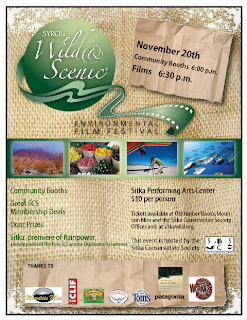The state of matter lesson was very close to the one from Module 8: Phun Physics of Phase change in which we graph the amount of energy needed to go from a solid to a liquid to a gas. However, my class did it backwards....
Here is a copy of the lesson:
States of matter – graphing
Daily Goal:
Students will observe, measure, and graph the energy of a substance (water) as it cools down over a period of time and changes states of matter from a gas to a liquid to a solid.
Materials:
- Bucket of water
- Several temperature probes
- Stopwatch
- Computer with the appropriate software
Duration:
The activity itself is spaced over several hours, depending on the ambient temperature outside.
Procedure:
- Begin the lesson with a review of the concepts from yesterday – Ask the kids what happens when the molecules of a substance in an excited gaseous state lose energy (heat)? Ask them to demonstrate it like they did yesterday. If they can do this then you are ready for the day’s lesson
- The class should agree on a prediction – that when a substance loses energy, its molecules should slow down until it is in a solid state. Write this prediction up on the board.
- Ask the students if they know exactly how much energy it takes for a substance to transform states from a solid to a liquid or a liquid to a gas? Can they think of a way to find out? See if the students can create an experiment (Help them by asserting that as far as we are concerned, heat is energy. So how do we measure heat?)
- The students will come up with the idea of taking the temperature of melting ice, then again as they are boiling it. Tell them that in this case we will work backwards, by sticking a temperature probe into boiling water then letting it cool and freeze. The probes will record the temperature over a period of time.
- Bring water to a boil and then place a probe into it and place it outside on the roof. You can check back to it after a few hours depending on the temperature.
- Once the water is frozen, take out the probe and hook it up to the computer. It should display the data given. Plot this on a chart with the temperature on the Y axis and the time on the x-axis. Put this plot up and ask the kids to show you on the graph “where the state of change took place?” Ask them why they think it is at that part.
- On the graph should be a flat line in the middle of the data at 32 degrees for some time as all of the ice froze. Ask the students why that line is there, why didn’t the temperature drop any more over that period of time? (it is a cooling process, and it takes time for ALL the water to lose enough energy to freeze)
- Discuss the principle of the cooling process with the kids, using an overhead of the graph. Circle key points on the graph and ask the students to explain in writing what the molecules are doing at that point.
Assessment:
Students will be assessed on their participation in the project and on their understanding of the what is taking place during the change in state of matter. I will use the writing to determine if the student understands the dropping energy levels causing a change in state.
The probes we used were Stainless Steel Temperature Probes from Vernier and they looked like this
one end went into the water and the other end hooked into a computer to download the information. The graph we ended up making looked a lot like the one from module 8 (below)
Except instead of the line looking like a staircase going up, ours looked like a staircase going down. It took the kids a few minutes of discussion and then they got it: in the graph above, the water was getting heat added to it, so over time the temperature climbed. In our experiment, we left the water outside to cool, so as time went on the water was losing energy. Simple to you and me, but I was pretty happy that they came up with that on their own.
The other lesson came from the the Alaska Seas and River's Curriculum. The lesson was geared for fifth graders, but I used it at third with a few modifications.
The lesson involves each students being a "fisher" and having to compete against other students to capture "fish" in a community "ocean". If the student does not catch enough fish then they are out of the game, so there is plenty of incentive to catch more than your buddy - the trick is that each year the fish left uncaught reproduce and are added to the stock: the more fish in your ocean, the more fish each person can catch per season (of course this is extremely oversimplified, but it gives the idea).
here is the link to the lesson
AK Seas and Rivers : Investigation two - Fishing for the Future
We played the game several times, and each time the students got better. The first game they wiped out the fish stocks within several rounds, and then they figured out that if they came up with self imposed limits, then the resource would last longer. By the end they went so far as to come up with a managment plan that all the students agreed to.
My rationale for teaching this lesson was very simple - Alaska fish stocks are down. The Halibut Individual Fishing Quotas, or IFQs are being cut once again, and it has been brought up that the main cause of this is overfishing. This is a real issue that faces Alaskans every day.













